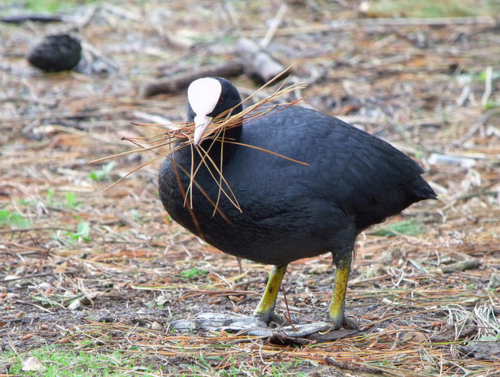(Starting new page) |
(Edit) |
||
| Line 1: | Line 1: | ||
[[File:Cootwithnestmaterial.png|center|500px]] | [[File:Cootwithnestmaterial.png|center|500px]] | ||
A little bit of human help for the birds can be a fun | A little bit of human help for the birds can be a fun activity to teach children how to care for other creatures and the environment in a non-intrusive and positive way. By providing building materials for the birds, you can encourage them to remain in your garden, yard or farm area. The benefits for the birds are easily found nesting materials and the benefits for you include birds eating garden/crop pests, birdsong and increased wildlife diversity in your own space. | ||
Gather together good bird nesting materials. Select natural materials that would be useful for a nest, ensuring that the items are safe. Suitable materials include: | Gather together good bird nesting materials. Select natural materials that would be useful for a nest, ensuring that the items are safe. Suitable materials include: | ||
Revision as of 03:57, 13 August 2016

A little bit of human help for the birds can be a fun activity to teach children how to care for other creatures and the environment in a non-intrusive and positive way. By providing building materials for the birds, you can encourage them to remain in your garden, yard or farm area. The benefits for the birds are easily found nesting materials and the benefits for you include birds eating garden/crop pests, birdsong and increased wildlife diversity in your own space.
Gather together good bird nesting materials. Select natural materials that would be useful for a nest, ensuring that the items are safe. Suitable materials include:
- Straw and/or hay
- Dried grasses or other safe dried plant materials
- Leaves, especially dried leaves
- Moss
- Twigs and small sticks
- Cotton wool
- Wool yarn
- Pine needles
- Fur (collect balls off fences and other areas)
- Hair (human hair can be collected from brushes and bundled into a plastic bag until there is enough to leave out for the birds)
- Natural string/twine
- Coconut coir
- Mud (a little mud bath can help those birds that like to cement the nest with mud)
Place the nest building materials in the garden where it is easy for the birds to find. You can create little piles, stick it on fence posts or stands, arrange in old crockery, use plant containers, etc. Arrange it in different areas of the garden to provide variety and to help the birds feel that they're collecting it naturally.
It's a good idea to do some research into the sorts of materials that your local birds like to use in their nests. That way, you can provide the exact materials that the birds are likely to take. Also, keep a note of which materials are the most popular with the local birds, so that you can top up on these more often.